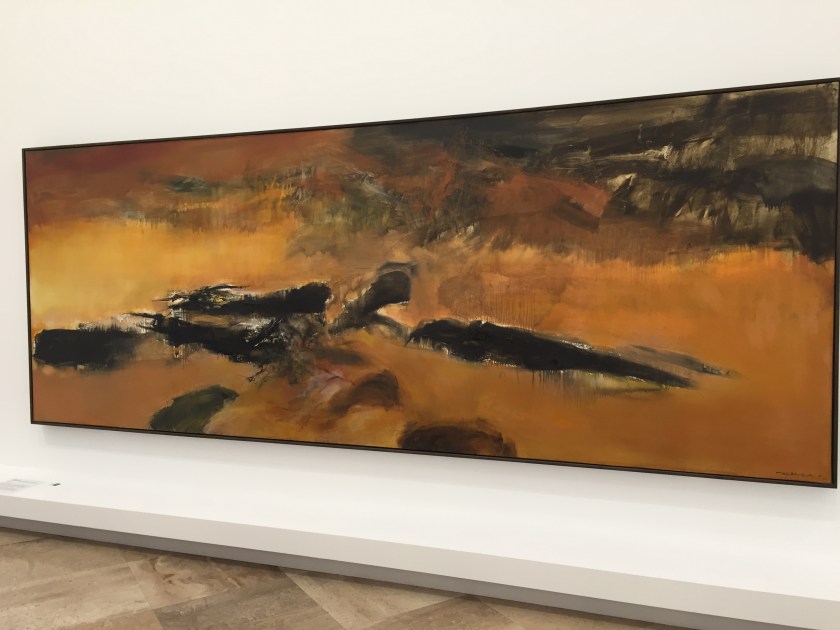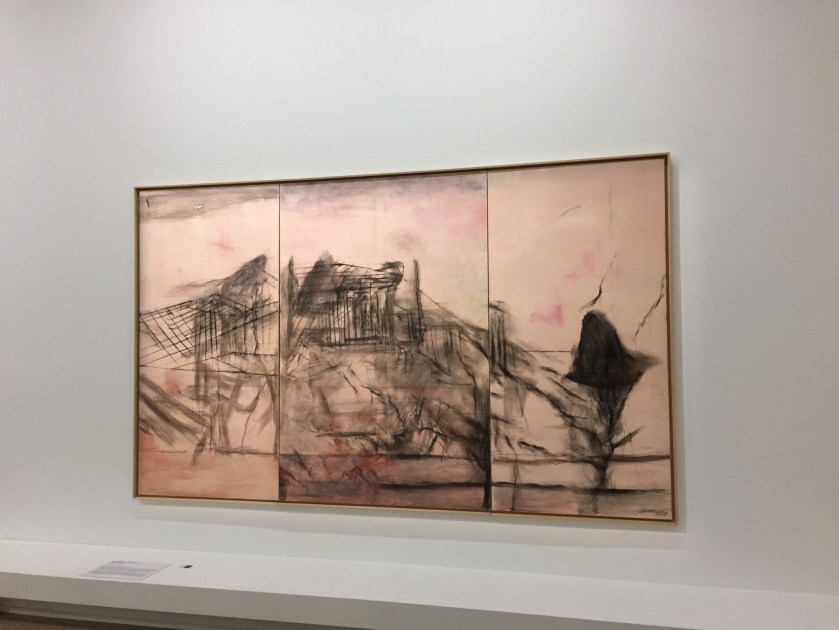When artist Zao Wou-Ki left China to come to Paris in 1948, his whole family gathered on the quay in Shanghai to bid him farewell. They were dressed in western clothes, the men in coats and felt hats, the women with Lauren Bacall hairstyles, flat shoes and leather gloves. His wife Lalan was coming with him, but they left behind their son with his grandparents, because they were only planning to stay for two years. By the time he came back to visit his mother, it was 1972 and his beloved father had died four years earlier.

Zao Wou-Ki had to wait two years to get his passport and visa, and months to get a passage—boats to Europe were rare. He disembarked in Marseilles after thirty six days of a voyage that filled him with boredom. But he was determined—he felt he had to get away from China or he would die.

Zao had been obsessed with painting since childhood, a pursuit encouraged by his father, a banker. At fourteen, he left home to study at the school of fine art in Hang-Cheou, 300km from home. But he felt stifled by Chinese art, which he thought mired in convention and rules. He wanted to free himself and his creativity. So he ended up in Montparnasse, where he remained. He did, however, travel extensively to New York and Hong Kong.

In Paris, Zao was influenced by major artists of his time, such as Paul Klee, Picasso, Matisse and Cezanne, and developed close relationships with Jean-Paul Riopelle, Alberto Giacometti, Joan Miró, Joan Mitchell and Sam Francis, among many others. But he was also inspired by poetry and music. Two of his best friends were poet Henri Michaud and composer Edgar Varèse. His work became increasingly freer, and he produced his marvelous glowing large works.

It is difficult to reproduce the depth, subtlety of color, and brilliance of these paintings in photographs, especially ones taken on a phone. But this is art to soothe and elevate the soul.

Across his career, Zao sought to create works that captured ‘the presence of nature’. He had rejected the classical conventions of Chinese calligraphy and landscape painting, but, by 1971, he returned to the brush-and-ink technique in which he was trained in China, with work that reflected its sources in Chinese traditions. Zao explained in a 1962 interview with the French magazine Preuves, ‘Although the influence of Paris is undeniable in all my training as an artist, I also wish to say that I have gradually rediscovered China.’ He added, ‘Paradoxically, perhaps, it is to Paris that I owe this return to my deepest origins.’

Zao was a member of the Académie des beaux-arts, and was considered to have been one of the most successful Chinese painters during his lifetime. He died in 2013.

Exhibition at the Musée d’Art Moderne de la ville de Paris.


I can only imagine how powerful these striking works must look in the right setting, Marina.
Thank you for introducing me to his work. I had never heard of him.
Best wishes, Pete.
LikeLiked by 1 person
How utterly peaceful ! One can walk into many art exhibits around the world, be enthused by what one saw but not be able in a hundred years to see what was there on the walls of your own home. The brilliant works by a Chinese artist new to me would be an hourly blessing to my soul . . . shall do more homework thanks ! I remember a business trip to Japan when v young and just married: my husband and I were taken to Tokyo’s National Gallery’s summer exhibit and had quite a time to get permission to export some we loved back to Australia. If later I was disturbed by life I would just go and stand in front and look and I could always get back to centrum. . Perhaps those born to shores Asian just pass on their belief systems better . . .
LikeLiked by 1 person
Yes, Asian work is often very peaceful—and grows on you the more you look at it. On the other hand, they do have anime which is turbulent…
LikeLiked by 1 person
Perchance I may have been too naïve to understand he anime . . .
LikeLiked by 1 person
Oh these are so interesting. Thank you so much for sharing them. All my best to you.
LikeLiked by 1 person
Thanks, JoHanna, I’m glad you enjoyed it.
LikeLiked by 1 person
Marina, thank you so much for this informed and detailed article. Zao’s paintings are stunning and your photos capture them well. I’ve never heard of this artist before (much to my shame) and have missed out on a lot! It’s interesting to learn how he returned to his artistic roots in later years, only able to find them by living abroad.
LikeLike
Great work well photographed
LikeLike